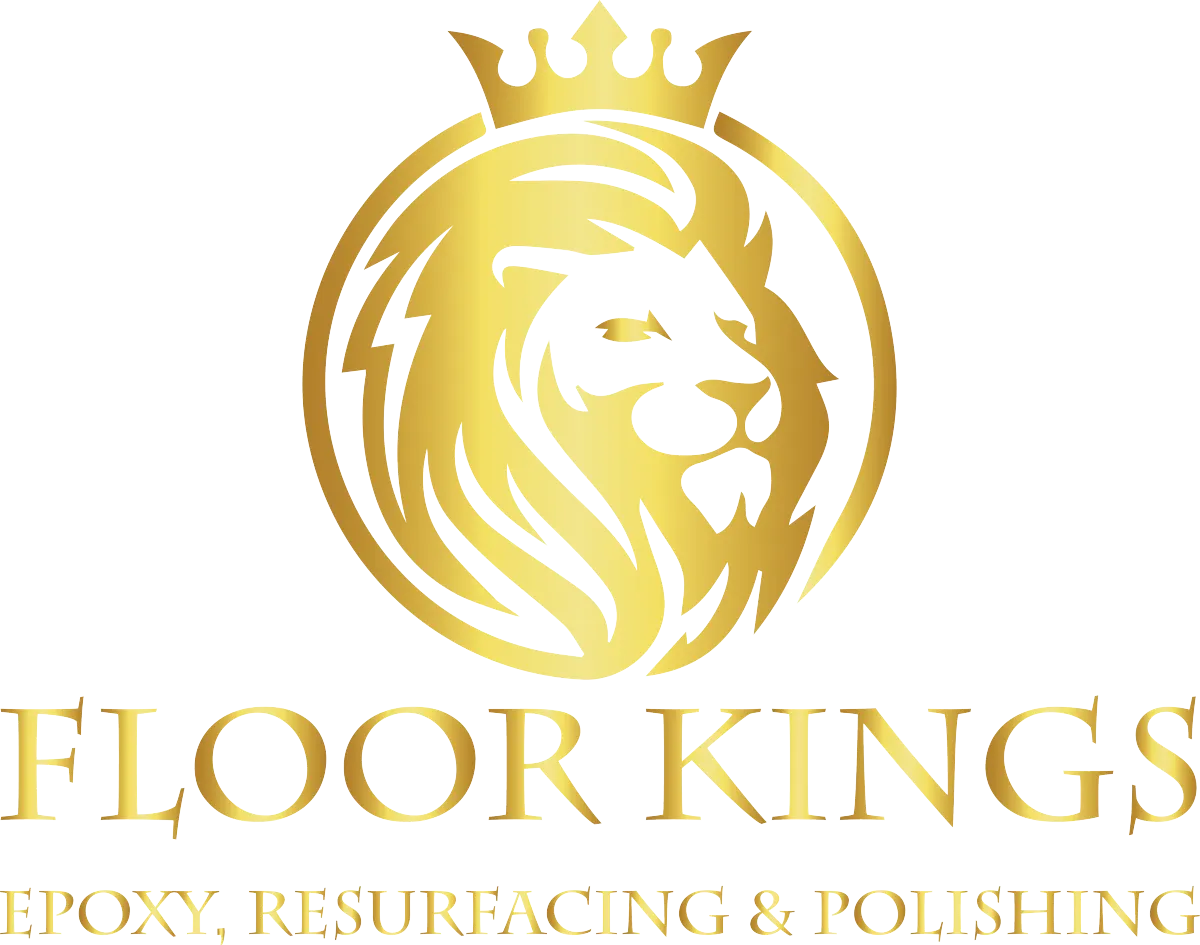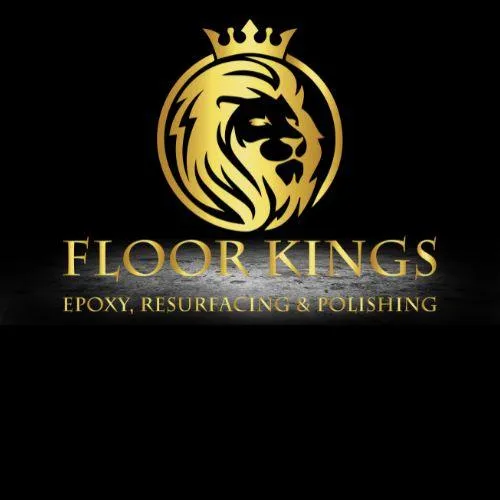
From Worn Concrete to Polished Perfection: Upgrading with Epoxy Overlays in Port St. Lucie
"The details are not the details; they make the design." – Charles Eames
Sometimes, a single transformation can breathe new life into a tired surface. Imagine stepping into your garage or commercial space, once defined by cracks and dullness, and suddenly seeing a gleaming, tough-as-nails floor that looks like something out of a design magazine. It’s not a dream or an unattainable luxury—it’s epoxy overlay magic!
At Floor Kings, we’ve seen countless Port St. Lucie floors evolve from battered slabs of concrete to polished masterpieces using epoxy overlays. In a climate like Florida’s, where humidity and seasonal rainfall can wreak havoc on unprotected concrete, epoxy overlays offer style, function, and longevity. But how does that process even work? And why should you consider an epoxy overlay for your own floor revival?
Buckle up. We’re about to take a deep dive into epoxy overlays—discussing everything from preparation, application, and design options to the top reasons they’re stealing the spotlight in Port St. Lucie. Get ready for short bursts of excitement, followed by long, insightful paragraphs that tell you exactly what you need to know about upgrading your worn concrete to polished perfection!
Table of Contents
Understanding the Basics of Epoxy Overlays
Why Port St. Lucie Loves Epoxy Floors
The Epoxy Overlay Installation Process
Surface Preparation: Key to a Strong Bond
Selecting Colors, Finishes, and Decorative Options
Benefits of Upgrading Worn Concrete with Epoxy
Maintenance: Keeping That Glossy Shine
Potential Challenges and How to Overcome Them
Residential vs. Commercial Applications
DIY vs. Professional Installation
FAQs: Common Questions Answered
Floor Kings: Your Epoxy Overlay Experts in Port St. Lucie
Call to Action: Let’s Transform Your Floor!
Let’s embark on this journey—turning mundane concrete into a glossy, resilient surface you can be proud of.
1. Understanding the Basics of Epoxy Overlays
An epoxy overlay is more than just a fancy coating. It’s a specialized mixture of resin and hardener that forms a strong bond over the surface of your existing concrete floor. Once cured, epoxy forms a seamless layer—beautiful, chemically resistant, and incredibly durable. Many people confuse epoxy overlays with thin paint-like products. But rest assured, a true epoxy overlay is thicker, stronger, and more customizable.
Think of it like the difference between a flimsy paper label and a solid plastic covering. Epoxy doesn’t just tint the floor—it overhauls it. With the right additives and finishing techniques, epoxy can mimic polished stone, incorporate metal flakes, or even glow in the dark. In Port St. Lucie, where the design sensibilities lean toward fresh, bright, and coastal-chic, epoxy overlays find a perfect home.
2. Why Port St. Lucie Loves Epoxy Floors
Port St. Lucie is a vibrant city surrounded by sun, surf, and balmy breezes. With all that moisture in the air, standard concrete floors can develop micro-cracks, spalling, and discoloration. Epoxy overlays act like a protective armor. They lock out moisture and prevent damage from chemical spills, oil, or even heavy foot traffic. That’s a big plus when you’re dealing with the local climate.
Locals also appreciate how epoxy floors elevate interior spaces. Whether it’s a busy household with kids and pets, or a commercial showroom that needs to stay spotless, epoxy’s seamless finish and low-maintenance attributes make it a winner. Plus, if you love the idea of a floor that sparkles or complements your décor with a sleek, reflective surface, epoxy overlays deliver big time.
3. The Epoxy Overlay Installation Process
A typical epoxy overlay job follows a step-by-step approach:
Assessment: Contractors evaluate your existing concrete—checking for cracks, moisture issues, or structural weaknesses.
Surface Preparation: The concrete is thoroughly cleaned and mechanically profiled (usually via grinding or shot blasting) to ensure good epoxy adhesion.
Repairs: Significant cracks or damage get patched. Holes are filled, and problem areas are smoothed over.
Primer Application: A specialized primer coats the concrete, helping the epoxy bond on a microscopic level.
Epoxy Mixing and Pouring: The epoxy resin and hardener are mixed according to strict ratios. Then the mixture is poured or rolled out, often at a specific thickness, depending on the project.
Additives and Customizations: Decorative elements, such as color flakes, metallic pigments, or quartz, are applied while the epoxy is still wet.
Curing and Finishing: Over 24–72 hours, the epoxy hardens, creating a unified surface. Topcoats or sealants might be added for extra protection.
Buffing/Polishing (If Desired): In some cases, light polishing or buffing is performed to achieve specific sheen levels.
The entire process can span a few days, but the result is a floor that transforms from worn concrete to polished brilliance.
4. Surface Preparation: Key to a Strong Bond
If epoxy is the star of the show, surface prep is the diligent stagehand ensuring everything runs smoothly. You can’t just roll epoxy over dusty, oily, or damaged concrete and expect it to last. The floor needs to be cleaned meticulously. Grinding helps remove contaminants, plus it creates a texture for the epoxy to cling onto.
Picture it as sanding wood before painting: if you skip sanding, the paint peels. Same concept here, but with a difference—grinding also levels out micro-imperfections, making sure your final epoxy layer is smooth and consistent. Skimping on prep leads to bubbling, peeling, or delamination over time. Yet with thorough prep, your epoxy overlay stands the test of time.
5. Selecting Colors, Finishes, and Decorative Options
One major perk of epoxy overlays? Customization! There’s no “one-size-fits-all” approach:
Solid Colors: Crisp, monochromatic floors that give a clean, modern vibe.
Metallic Epoxy: A swirl of reflective pigments, creating a marbled, three-dimensional look.
Flake Broadcast: Colorful vinyl or metallic flakes scattered over the wet epoxy, providing texture and aesthetic variety.
Quartz Blends: Ultra-durable, textured surfaces incorporating colored quartz granules—great for slip resistance.
We all have different tastes, and epoxy can cater to each. Want something subtle and sophisticated? Or maybe bright, bold, and conversation-starting? Either direction is possible. And that’s powerful when you’re keen on personalizing your space or ensuring brand consistency for commercial floors.
6. Benefits of Upgrading Worn Concrete with Epoxy
Let’s do a quick run-through of why epoxy overlays might be your next best choice:
Enhanced Durability: Epoxy floors resist impacts, abrasions, and chemical spills.
Moisture Resistance: Crucial in humid Port St. Lucie, epoxy acts as a water-tight barrier.
Low Maintenance: Sweeping, occasional mopping, and mild cleaners are typically enough.
Aesthetic Appeal: The high-gloss or matte finish can be tailored to your design preference.
Longevity: A well-installed epoxy floor can last years, even decades, without major issues.
Affordability Over Time: Though initial costs can vary, the long-term payoff in reduced repairs and maintenance often makes epoxy a cost-effective choice.
Add to that the luxurious sheen and you start to wonder why you stuck with that old concrete for so long.
7. Maintenance: Keeping That Glossy Shine
Epoxy overlays are famously easy to clean. For daily upkeep, a soft-bristle broom or dust mop does the trick. Spill something nasty? A quick wipe with a neutral cleaner is often sufficient. Unlike porous concrete, epoxy doesn’t let liquids seep in, so stains rarely set.
But watch out for harsh chemicals. Over time, repeated exposure to caustic substances can dull the surface. Also, avoid dragging super-sharp metal objects across the floor. Though epoxy is tough, deliberate gouges can scratch or chip it. A little mindfulness ensures your polished perfection stays perfect.
8. Potential Challenges and How to Overcome Them
No solution is flawless, so let’s talk potential challenges:
UV Sensitivity: Some epoxies can yellow if exposed to constant sunlight. If your area gets direct light, opt for UV-resistant topcoats.
Long Cure Times: For best results, you might need to limit foot traffic for a day or two—longer for vehicles. Plan accordingly.
Slip Risk When Wet: High-gloss finishes may become slippery. Adding slip-resistant textures or additives mitigates this.
Subfloor Quality: If the underlying concrete is severely compromised, repairs or new pours might be necessary before epoxy.
Professional Installation: Epoxy’s chemistry is exacting. Mistakes in mixing ratios or application can cause significant adhesion issues.
9. Residential vs. Commercial Applications
In residential settings—garages, patios, or interior floors—epoxy overlays provide a modern aesthetic with minimal upkeep. Think about a stunning living room floor that bounces light around, or a garage workshop that’s easy to clean after greasy tasks.
For commercial establishments—retail shops, showrooms, restaurants—the seamless nature of epoxy supports hygiene, quick cleaning, and a slick, professional look. Plus, it endures heavy foot traffic, chairs, carts, you name it. That’s why so many businesses upgrade from worn concrete to epoxy floors.
10. DIY vs. Professional Installation
Scrolling through home improvement forums might tempt you to handle an epoxy overlay yourself. But professional results typically outshine DIY attempts for several reasons:
Surface Prep Expertise: Professionals use grinders, shot blasters, and industrial vacuums to ensure impeccable bonding conditions.
Correct Formulations: Epoxy components require precise ratios, measuring humidity levels, temperature constraints—all best handled by experienced pros.
Decorative Techniques: High-level decorative finishes like metallic swirls or flake patterns need a practiced hand.
Warranty and Support: Many professional installers offer warranties, ensuring you’re protected if something goes awry.
While a small DIY project might be feasible in some cases, the margin for error is large. For long-lasting, show-stopping floors, professional help is worth it.
11. FAQs: Common Questions Answered
Q: Will my floor look super plastic or unnatural?
A: Not necessarily! Epoxy finishes range from subtle matte to ultra-gloss. A solid color can appear sleek, while metallic or flake systems offer depth and character.
Q: Do I need underfloor heating or special accessories?
A: Epoxy floors don’t require anything extra. If you want radiant heating, it can be placed below the concrete slab before the overlay—but it’s optional, particularly in Florida’s warm climate.
Q: Can epoxy fix structural cracks?
A: Epoxy overlays help mask surface-level damage, but severe structural cracks need addressing at the slab level first. Repairs, crack fillers, or even partial re-pours might be necessary.
Q: How long does an epoxy overlay last?
A: Properly maintained, you can expect 5-10+ years of durability in residential settings—often more. High-traffic commercial areas may see slightly reduced lifespans but still get years of solid performance.
12. Floor Kings: Your Epoxy Overlay Experts in Port St. Lucie
Enter Floor Kings—your local flooring heroes in Port St. Lucie. We’re more than just installers; we’re craftsmen who understand Florida’s unique conditions. Want an overlay that’s heat-tolerant for that sun-baked patio? We can do it. Need a chemical-resistant garage floor to handle all your DIY experiments? We’ve got specialized epoxy blends.
Our focus is on clarity, excellence, and customer delight. We walk you through every step—from subfloor assessment and design consultation to final polish. The result? A floor that doesn’t just look good today, but stands strong years down the line. Plus, we tailor each project to your lifestyle and budget, ensuring you get the best bang for your buck.
13. Call to Action: Let’s Transform Your Floor!
Ready to transform that worn concrete into a statement piece? Fill out our contact form and let's chat about your vision! Or, if you prefer shoot us an email at [email protected] or call 772-370-7938 Together, we’ll bring an epoxy overlay solution to your Port St. Lucie space that’s both stunning and built to last.

